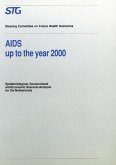The work as a whole reveals the persisting nature of communicable diseases throughout history and strongly argues that, although the relevant importance of individual infections may vary over time, man's struggle against the microbiological world can never be relaxed. How England has been affected is described in detail and evidence is put forward to suggest that complacency (or at least misjudgement) concerning the ever-present risks of emerging and re-emerging infections, led unwisely to the dismantling in 1974 of its established arrangements for their control, along with the subsequent need, frequently repeated, to create new structures for this purpose.
This book will appeal strongly to all students and practitioners of public health along with those interested in English social history.
Dieser Download kann aus rechtlichen Gründen nur mit Rechnungsadresse in A, B, BG, CY, CZ, D, DK, EW, E, FIN, F, GR, HR, H, IRL, I, LT, L, LR, M, NL, PL, P, R, S, SLO, SK ausgeliefert werden.
"This book provides a historical overview of the development and redevelopment of communicable disease control in England and offers an autobiographical narrative of the era of infectious disease prevention and control following World War II. ... likely will have universal appeal to those interested in public health history and, more specifically, the history of infectious disease control and the continuing threat of emerging and re-emerging diseases. Excerpts from this book may provide illustrative examples for instructors teaching courses in public health and infectious disease epidemiology." (Margaret L. Chorazy, Doody's Review Service, June, 2012)









